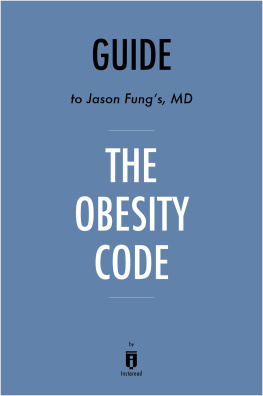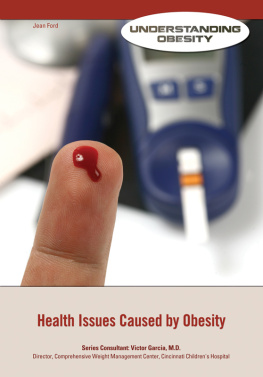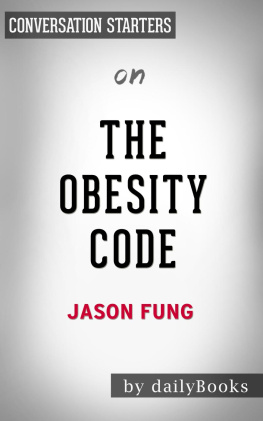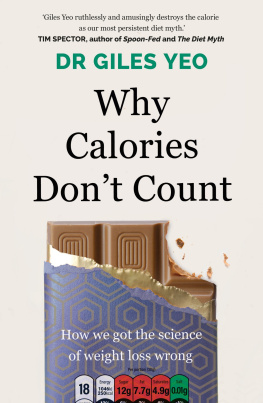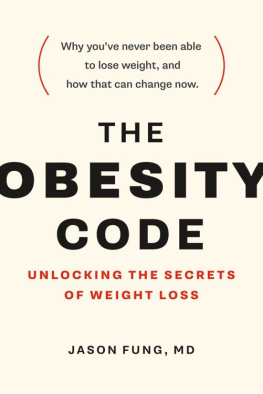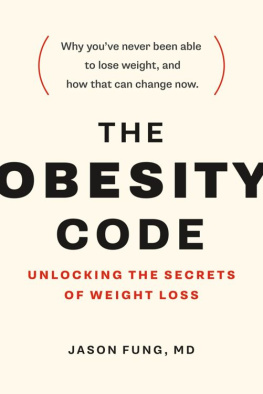Guide to
Jason Fungs, MD
The Obesity Code
Unlocking the Secrets of Weight Loss
by
Instaread
Please Note
This is a companion to the original book.
Copyright 2016 by Instaread. All rights reserved worldwide. No part of this publication may be reproduced or transmitted in any form without the prior written consent of the publisher.
Limit of Liability/Disclaimer of Warranty: The publisher and author make no representations or warranties with respect to the accuracy or completeness of these contents and disclaim all warranties such as warranties of fitness for a particular purpose. The author or publisher is not liable for any damages whatsoever. The fact that an individual or organization is referred to in this document as a citation or source of information does not imply that the author or publisher endorses the information that the individual or organization provided. This concise companion is unofficial and is not authorized, approved, licensed, or endorsed by the original books author or publisher.
Table of Contents
Overview
The Obesity Code addresses the history, causes, and treatments of obesity and todays rising obesity rates. By understanding it through scientific and social study, obesity becomes less of a blanket term for metabolic complications and a more tangible problem with real, though not widely practiced, solutions.
The main problem with treating obesity is that many doctors and their obese patients dont know what actually causes obesity. Often, health experts believe that weight gain results from consuming too many calories while not expending enough calories, a theory known as calories in, calories out. However, decades of research has proven that this obesity model is problematic and oversimplified. Calorie consumption and expenditure are not independent of each other. If people decrease calorie consumption in an effort to lose weight, their body compensates by slowing down processes such as metabolism to expend fewer calories. Also, exercise is not nearly as instrumental in weight loss as was once thought, as basal metabolism governs a much larger percentage of energy expenditure. Instead, obesity is the result of a hormonal imbalance primarily caused by insulin levels that spike for too long. Sustained, high insulin levels signal the body to maintain a regular weight that is too high. This makes it difficult to prevent plateauing after short-term weight loss and subsequent weight gain.
Diet is the most important factor in both short-term and long-term weight loss. By eating the right foods at the right times, people can better control their levels of insulin and insulin resistance and better manage their weight over the long term.
Important People
Jason Fung is the author of the book and a physician who specializes in treating kidney diseases. In the process of determining the best practices for treating his patients, he uncovered truths about obesity that have widespread implications for patients suffering from obesity, diabetes, and other metabolic complications.
Key Insights
- The status quo for medical treatment for obesitydecreasing calories in, increasing calories outdoesnt work, yet doctors continue to prescribe it.
- Exercise does not play as large a role in weight loss and obesity as some experts believe.
- Obesity occurs when hormones become unbalanced and signal the body to maintain a higher weight.
- Research has linked obesity to high-glycemic carbohydrates, also known as refined carbohydrates.
- Sugar intake is a key factor in obesity, and sugar-sweetened drinks are one of the main culprits in weight gain.
- Fiber has a number of health benefits; it reduces absorption of carbohydrates.
- To overcome obesity, individuals need to lose weight in the short term and redetermine their body weight set point in the long term by breaking the cycle of insulin resistance.
- Obesity has multiple causes and therefore requires several different targets and treatments to overcome each individual factor.
Analysis
Key Insight 1
The status quo for medical treatment for obesitydecreasing calories in, increasing calories outdoesnt work, yet doctors continue to prescribe it.
Analysis
Sometimes medical treatments become common practice for doctors and common knowledge for patients even in the face of research that suggests they are ineffective or even harmful. One such treatment is the energy balance theory, also known as calories in, calories out, which claims that people should lose weight if they decrease their intake of calories while increasing their caloric expenditure. However, numerous studies over the past several decades have proved this theory to be false, and the obesity rate has continued to rise in spite of this practice. Still, health care providers and even the US government stand by this theory as the best way to combat obesity.
According to a 2015 Nielsen survey, 41 percent of global respondents said that eating smaller portionsor in other words, calorie reductionwas their chosen diet strategy. [1] It was more common than any other weight-control strategy. In North America, portion control was even more popular, with nearly half of respondents practicing some form of it. Those percentages demonstrate just how prevalent calorie reduction continues to be as a treatment for obesity. Calorie reduction may have been a recommendation from an individuals doctor. Or dieters may have implemented this strategy on their own, based on inaccurate assumptions about calories that theyve heard their whole lives.
This belief system may be starting to shift. More than one-third of Nielsens respondents, 37 percent, said their tactic was to consume fewer processed foods. In North America, that number was even higher, at 46 percent, the highest of any region. In addition, 57 percent of respondents said they were adding more natural and fresh foods to their diet, an uptick from 55 percent in Nielsens 2011 survey. These numbers suggest that more people are recognizing the importance of the types of food and beverages they consume rather than just the amount of calories they intake.
Key Insight 2
Exercise does not play as large a role in weight loss and obesity as some experts believe.
Analysis
Exercise is only one factor in calorie expenditure. And its a less important factor relative to basal metabolic rate, which is the energy expended through bodily processes such as maintaining body temperature and liver or kidney function. Theories abound that increased inactivity has led to the rise of obesity, but various studies have debunked those theories. If a lack of exercise does not cause people to gain weight, then increasing exercise isnt likely to help people lose weight either.
A study published in February 2016 suggests that more exercise does not necessarily equate to higher levels of energy expenditure. [2] Researchers concluded that instead, people who are exercising more than average eventually reach a plateau. After that plateau, any gains made are relatively insignificant. Moderate exercise did lead to more calories burned than for participants who were sedentary. But once someone worked out beyond the sweet spot, as researchers called it, calorie expenditure reached a ceiling. [3]
Key Insight 3
Obesity occurs when hormones become unbalanced and signal the body to maintain a higher weight.
Analysis
Hormones perform critical functions throughout the body including regulating weight management systems, such as appetite, blood sugar levels, and fat storage. Insulin is a fundamental hormone for fat storage. It regulates the amount of glucose in the bloodstream from any carbohydrates consumed. When insulin levels are too high, fat accumulates around the body. If sustained over time, obesity results.
Next page
